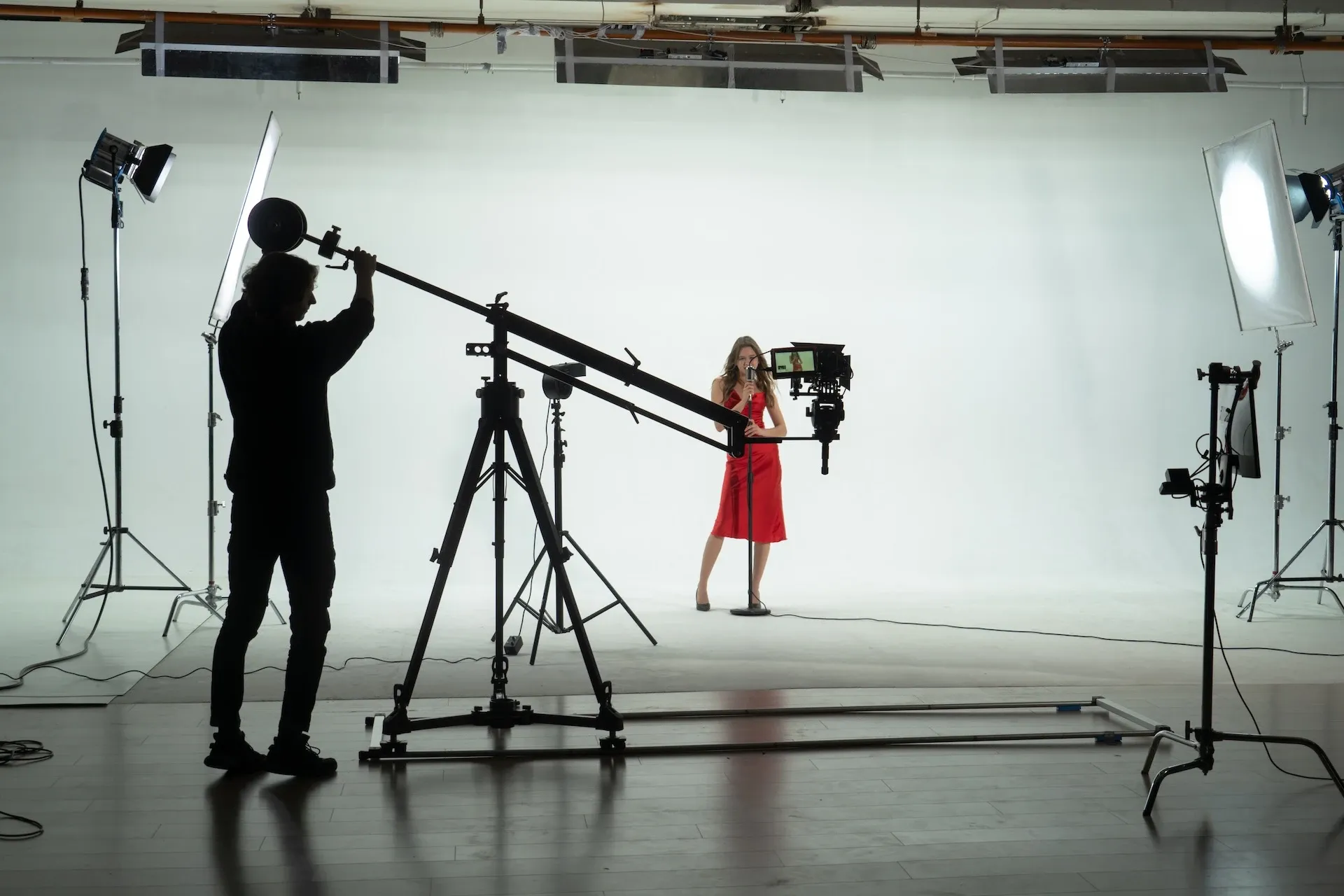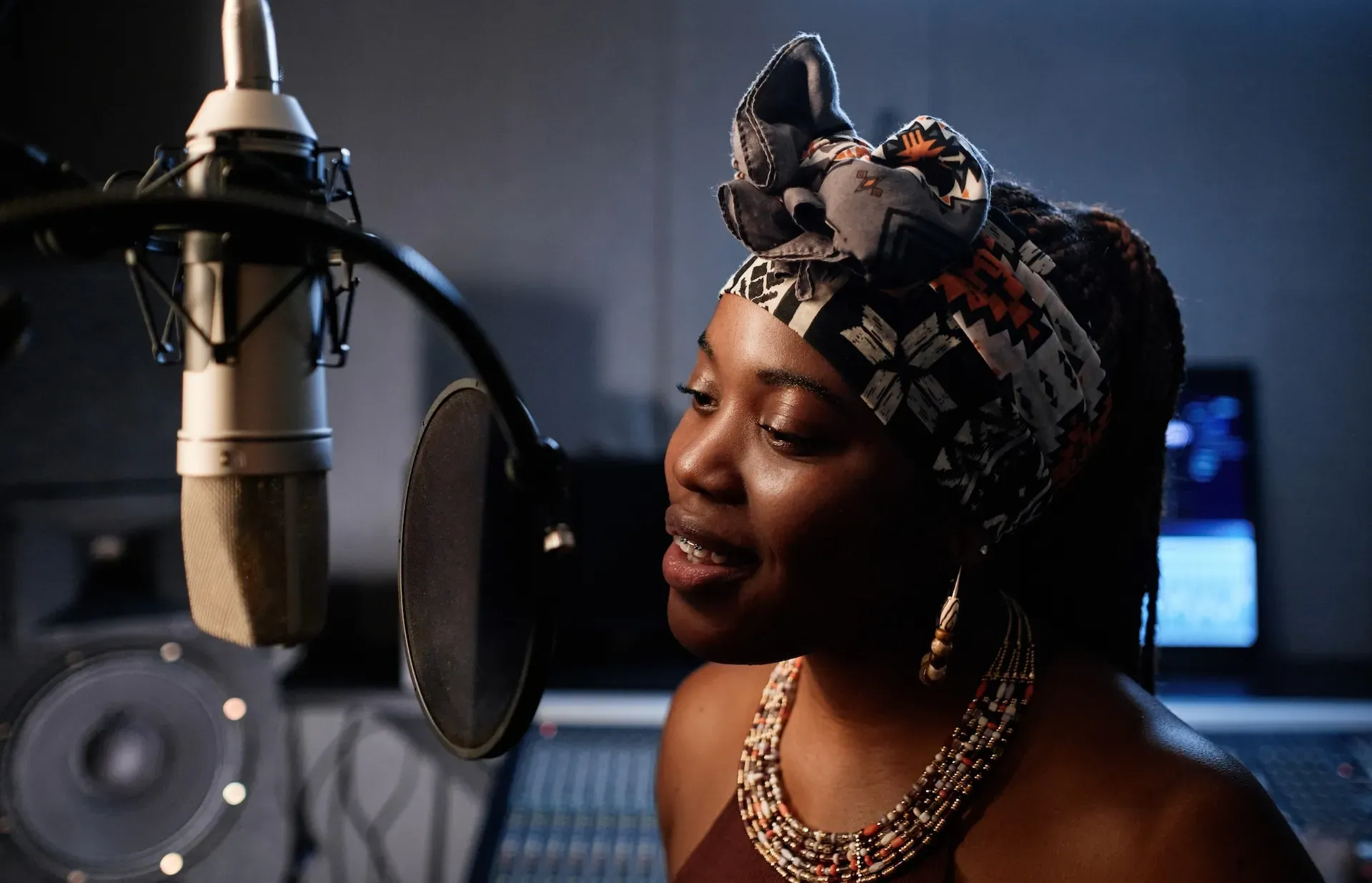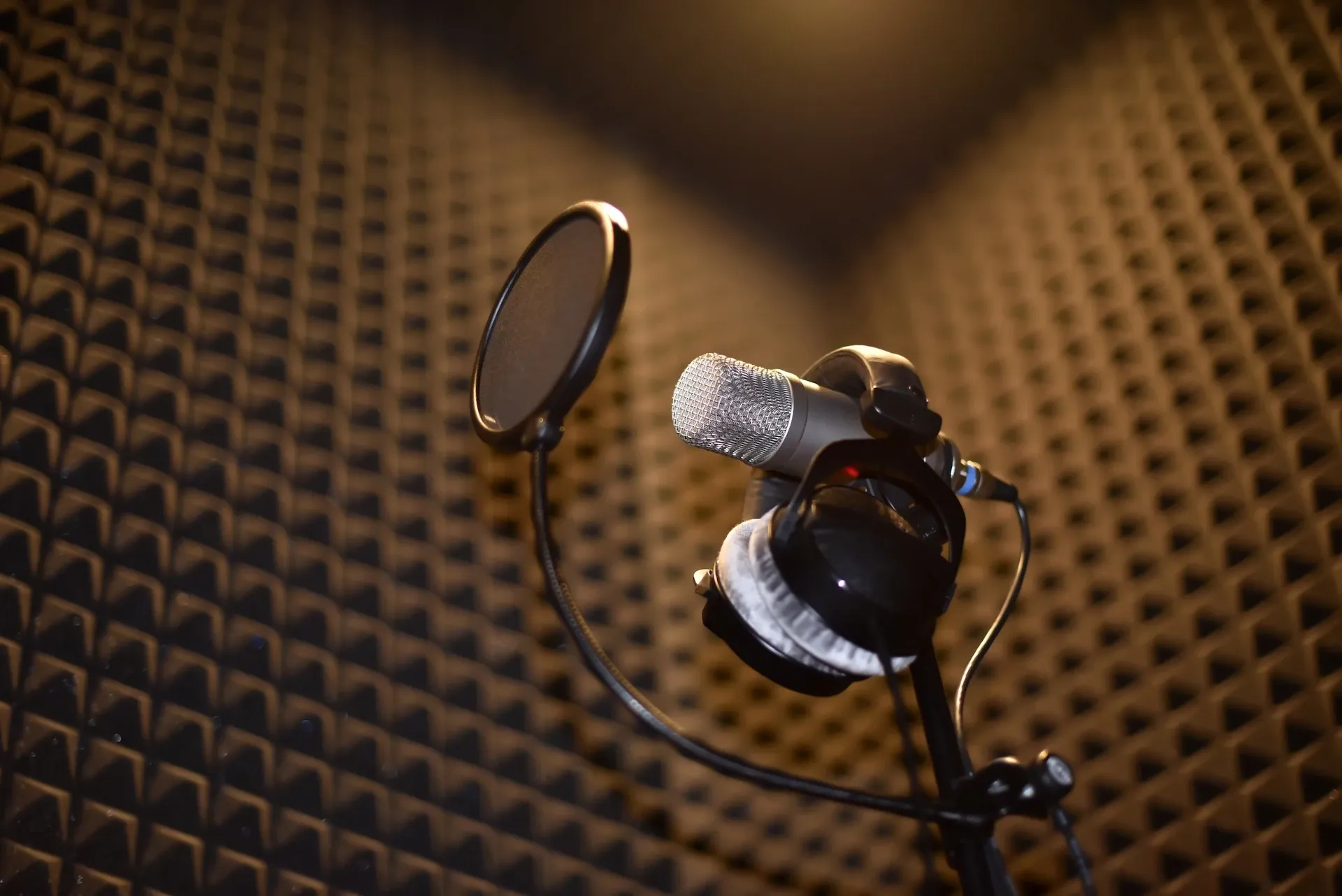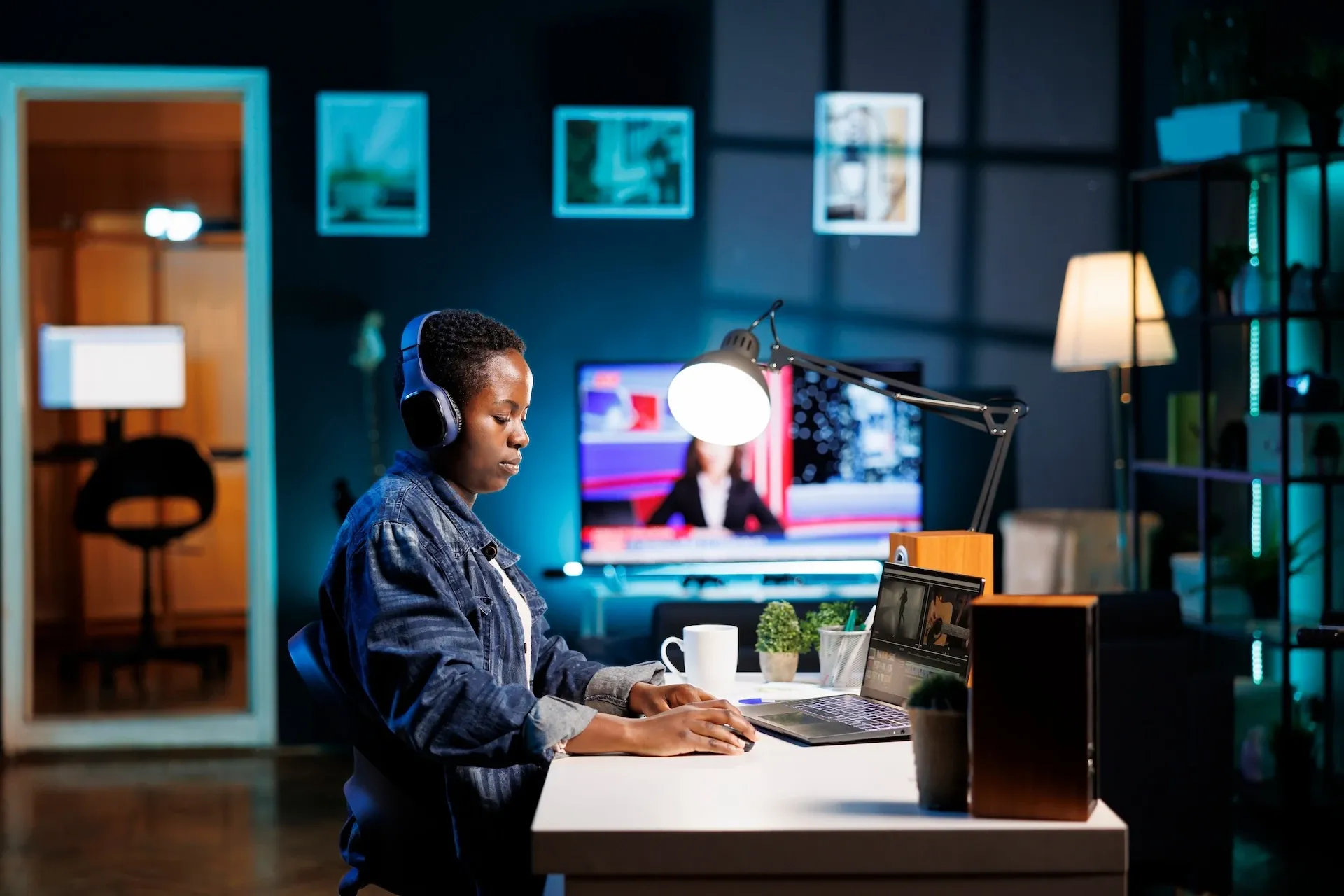What is ADR in filmmaking?
ADR is one of the handiest post-production processes out there. Learn what it stands for, how it works, and some of the best examples.

ADR is a staple of filmmaking, and will improve your footage during the post-production process. Today, we’ll cover the essentials, then finish with some recent examples from world-famous filmmakers.
We’ll discuss:
- What is ADR?
- Why do filmmakers use ADR?
- How often is ADR used in film?
- Is ADR the same as dubbing?
- What’s the difference between ADR and voiceover?
- How is ADR recorded?
- How to record ADR for your project
- What are the best and worst ADR film examples?
What is ADR?
ADR is a filmmaking technique used in post-production. It stands for “automated dialogue replacement” — if you’re not familiar with the phrase, you’ll have certainly experienced its effects.
In a nutshell, ADR is dialogue recorded to replace speech in an existing piece of content. The ADR should match the speed, sound, and pattern of the initial dialogue, so as to create a convincing replacement.
Here’s Hugh Jackman doing ADR for Logan in 2017. Don’t try this at home.
Why do filmmakers use ADR?
ADR is recorded in a controlled environment, swooping in to save the day when audio goes wrong. Let’s take a look at the main reasons why filmmakers use ADR.
Correcting accent slip-ups
Not everyone can be Christian Bale or Toni Collette — accents are hard. Actors spend time practicing and getting into the role, but they still might slip up. It’s often a small thing, perhaps when the character is screaming, crying, or doing something strange with their voice. 90% of viewers won’t notice.
But that other 10%? It’ll pull them right out of the story, breaking the realism. Once these inconsistencies are spotted, the actor can record ADR to smooth them out.
Making the dialogue clearer
Sound effects, music, and other pieces of dialogue may drown out an actor’s lines. Unless you’re Christopher Nolan — more on him in a moment — you’ll likely want everyone’s dialogue to be crystal clear. With ADR, actors can head into the booth and rerecord their lines.
This is ideal if you can’t feasibly capture clear audio on set. If you’re shooting super wide, you can’t really use a boom mic, and your actors may not be able to discretely wear lavalier microphones. In this case, you’d be best filling in the blanks with ADR.

Changing the script
Once a project goes through test screenings and production notes, the script may be tweaked here and there. One common change is curse words — producers and stakeholders may want the script “cleaned up” to appeal to a broader audience.
Award-winning ADR supervisor Anna MacKensie did a lot of this back in the day, as she was hired to edit The Sopranos for network syndication. She was tasked with replacing “colorful” language with ADR, cutting away from the speaker if it didn’t sync up. As you can imagine with a program like The Sopranos, it involved a lot of rerecording.
Retaking footage
Just as you’d retake a scene with the camera, you can give it another pass with ADR. When shooting dynamic scenes like fights and chases, the audio might not nail the vibe you’re going for.
And that’s fine. Bring your actors back for ADR so they can grunt, scream, go “UGH!”, and laugh maniacally until you’ve got the pumped-up reel you need. This kind of ADR delivers the desired atmosphere and nuance without filming the whole thing again.

Decreasing background noise
Unless you’re running a completely closed, controlled set, you’ll bump into background noise here and there. In some cases, you might need more background noise to achieve a sense of realism — this calls for field recording. But what if there’s too much interference, turning your intimate streetside monologue into a garbled mess?
You can dial down background noise in post-production, but if it’s bled into your actors’ dialogue, you’ll need to apply ADR. Doing so will achieve a crisp, evenly balanced dialogue track while also reducing background noise.
Adding sound effects
Maybe you need an extra breath here, a devious burp there — but your actors aren’t available for ADR, for whatever reason. Don’t sweat it. You can use sound effects to paper over any cracks, running the gamut of vocalizations right down to, well, any other sound effect you can think of.
Did that slamming door sound a bit wimpy? Need more oomph for the high-octane sports in your sizzle reel? We’ve got you covered.
With Epidemic Sound, you’ll have access to more than 200,000 unique sound effects and variations, plus more than 50,000 next-level music tracks.
Plus, our dedicated Adobe and DaVinci Resolve plugins give you the freedom to tailor your soundtrack to the nearest frame, unlocking our catalog directly within your editing software. Upgrade your ADR game today with Epidemic Sound.

How often is ADR used in film?
ADR is used in pretty much every mainstream production you can think of, whether it’s a feature film, TV series, social media short, in-depth web series, or something else entirely. Just as visual hiccups are cured with reshoots or B-roll, ADR is used to assemble a pitch-perfect audio track.
While ADR is rife across mainstream content, there are a few pockets in which its absence is necessary — namely reality TV and found-footage films. In these cases, excessive ADR would make the content feel too polished, too much like a “manufactured” piece of work.
Imagine watching Love Island with all of the dialogue painstakingly rebuilt, or The Blair Witch Project with crystal-clear speech. Doesn’t work, does it?
Is ADR the same as dubbing?
The act of ADR might seem similar to dubbing, but it’s like comparing milk to yogurt: kinda the same, but not really. Editors dub audio for the intended audience, often in a different language. You’ll have probably noticed this during classic martial arts movies, or if you’ve ever watched a children’s film from another country.
Good dubbing can’t truly match the intricate movements of the original language, but it’s slick enough not to cause issues. Ever seen the Swedish version of Shrek? It still rocks.
What’s the difference between ADR and voiceover?
Like we hinted at with dubbing, voiceover and ADR are sometimes mentioned interchangeably. They are different, though: voiceover is the specific act of, well, voicing over the action. It’s generally used to provide extra information, narrate a non-fiction scene, provide comic asides, and more — but it’s “bonus” material.
Morgan Freeman wasn’t on screen narrating every beat of The Shawshank Redemption. Rather, he recorded a voiceover to add more context and emotional beats.
How is ADR recorded?
Once initial production has wrapped, actors may be called back for ADR. They’ll be brought into a recording booth or studio, in which a looped scene is played in front of them. They’ll then have the time and space to deliver multiple takes.
As technology has become more advanced and affordable, indie filmmakers may choose to record ADR remotely. This is totally valid and can work a treat, but may not give filmmakers as much control as they’d like.
How to record ADR for your project
ADR runs through Hollywood’s veins, but that doesn’t mean you can’t do it on a budget. Let’s run through the key steps for nailing ADR.
1. Identify ADR-able scenes in post-production
Once you’ve wrapped shooting, you’ll need to piece everything together. When you get to the point where everything’s sitting nicely on your project timeline, you’ll be able to see which scenes require ADR.
Not every scene needs ADR, and even if that were the case, you might not have the budget to do so. Timestamp the relevant scenes and shots, and if necessary, rank them by priority.
2. Secure a sound-proof room
A studio would be ideal, but if you don’t have one available, you can make do with a meeting room or small living space. Soundproof the walls and hard surfaces with things like blankets, pillows, and duvets — this will minimize echo. Once you’ve done some test recordings and are happy with the space, you can bring the actors in for individual sessions.

3. Give your actors a good screen, headphones, and microphone
Your actors should be able to see and hear the thing they’re aiming to reproduce — easily readable captions wouldn’t hurt, either. On top of that, they’ll need a high-quality microphone. The type of mic depends on what you want your finished product to sound like, but your safest bet is a model similar to the equipment used on-set.
4. Give your actors several takes
Just as you’d rarely wrap filming after one run-through, leave your actors space to complete multiple ADR takes. Offer direction if needed, and consider different tones and levels of intensity. This way, you’ll have more to work with when you’re deep in the edit.
In terms of preparation, consider giving your actors a cue sheet and some kind of aural countdown, similar to a musician using a click track. This will help them sync with the on-screen action quicker, hopefully delivering a perfect take in less time.
5. Edit your footage
Use your video-and audio-editing software of choice to integrate your ADR. Ensure that it’s mixed and mastered at similar levels to your existing footage, line it up with the movement of your actors’ lips, and shave away clips that don’t work. From there, work in whatever room noise, foley sounds, and additional audio you need to make your content pop.

What are the best and worst ADR film examples?
Now that you know what ADR is, why it’s used, and how to record your own, let’s wrap things up. Here are three clear examples of what good, odd, and no ADR sound like, all from popular 21st-century films.
The Lord of the Rings trilogy (2001–2003)
Peter Jackson’s genre-defining take on The Lord of the Rings changed the game — the performances, the score, the on-location grandeur of New Zealand. However, such large-scale authenticity meant cutting back elsewhere.
Shooting in the wild left the crew at the mercy of the elements: wind, road traffic, and even planes. The series’ Oscar-winning sound engineer, Hammond Peek, said that airplanes often flew over during shoots. Stopping every time a plane came by burnt through the budget, so they made the decision to use ADR. Turns out they did a pretty good job.
The Great Gatsby (2013)
“Huh. That was strange,” is a rational response to most of Baz Luhrmann’s films, and The Great Gatsby is no exception. The below scene shows Gatsby and Carraway chatting in the former’s car, zooming past other vehicles, train lines, and police officers. It’s fast-paced, pulse-pounding eye candy.
But the dialogue? It’s…unconventional. The speech has clearly been ADR’d, and critics did not like the way it turned out. It’s artificial, uncanny, not quite lining up with the environment — it’s the opposite of how most filmmakers would approach ADR.
Luhrmann is known for his hyper-stylized, over-the-top approach, so a charitable reading could view this as intentional. To a casual viewer, though, it may just look poorly edited.
Dunkirk (2017)
Christopher Nolan is one of the world’s most celebrated filmmakers, and he’s on this list for a reason: he doesn’t use ADR. The award-winning director prefers to capture actors’ genuine reactions and speech patterns, doing so with infamously loud IMAX cameras.
The result? Incredible scenes, raw emotion, and often-muffled speech. Some viewers consider this a feature rather than a bug, while others have described the dialogue in 2017’s Dunkirk as near-unlistenable.
Moreover, Nolan’s preference for “natural” dialogue could also boil down to the fact that ADR takes days, sometimes even weeks, to complete. ADR isn’t a five-minute job, and even though it’s usually needed in some form, you should still aim to capture the best audio you can on set.
Now that you know the basics of ADR, it’s time to work it into your own content. Experiment, make mistakes, improve, and find the right equipment and processes that make sense for you and your team.
If you’d like to take your sound to the next level, it doesn’t stop at ADR. We mentioned room noise, foley sounds, and other sound effects, but that’s all before you even consider music.
After all, the soundtrack can make or break your content — why settle for anything less than the best? We’ve got you covered.
Our catalog is high-quality, affordable, and safe. An Epidemic Sound subscription goes beyond royalty-free music, removing the headache of licensing and freeing you up to do what you do best.
You can enjoy the safety of our license hand-in-hand with our massive catalog of 50,000 tracks, covering just about every genre you can think of. You’ll also gain unlimited access to our advanced search functions — finding the right sound’s never been easier.
It’s better than royalty-free. It’s worry-free. Get started with Epidemic Sound below.

Related posts:

